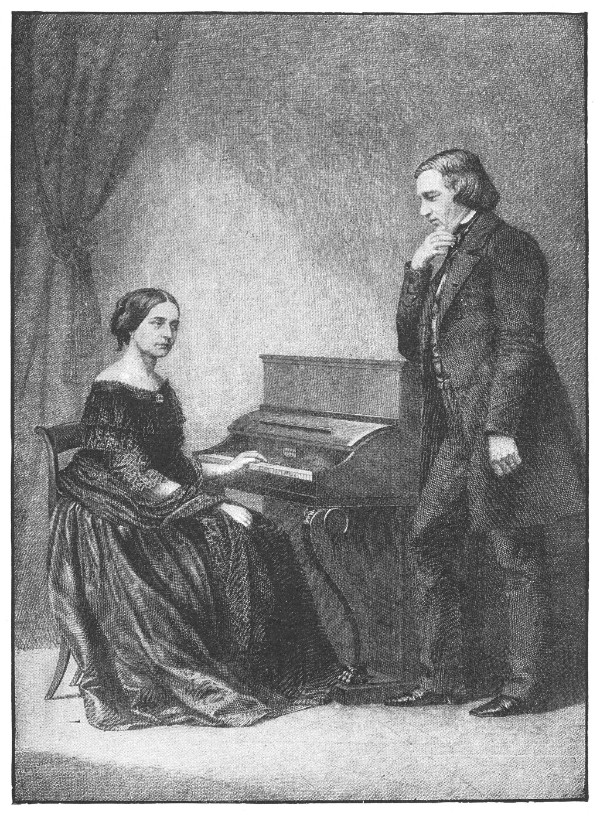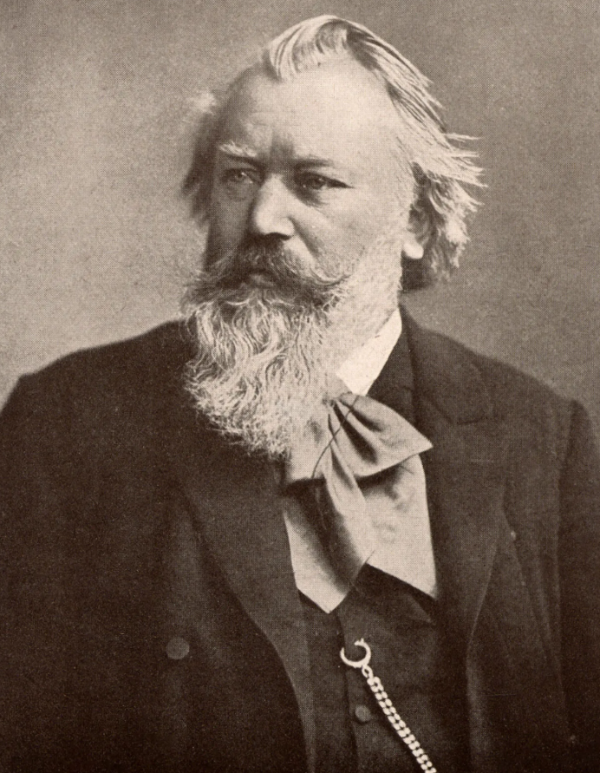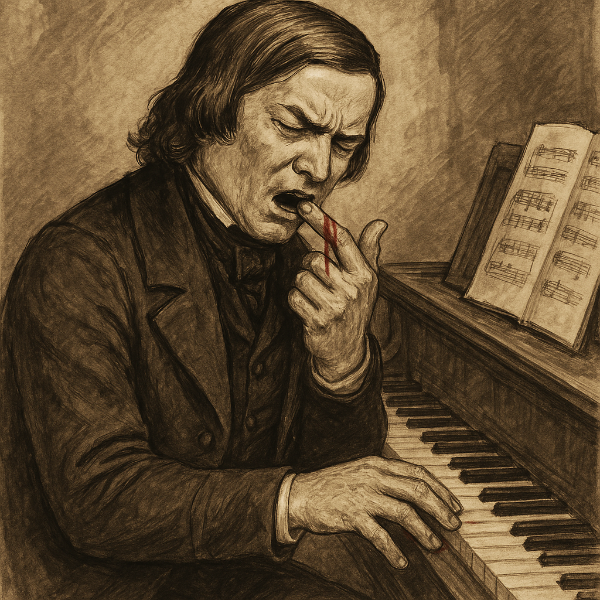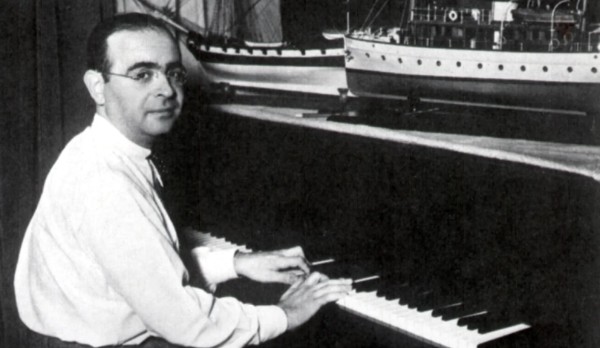With technological advancements, our music players can now generate a list of music tailored to our preferences, matching our usual choices at different times of the day. It is both bizarre and fascinating to discover what our music player thinks we like. Sometimes, these suggestions reveal patterns we didn’t consciously notice, offering a fresh perspective on our musical inclinations.

© az616578.vo.msecnd.net/
When I decided to write an article about my favorite composers and their piano compositions, I scrolled through the selections my music player suggested. To my surprise—or perhaps not—I genuinely enjoyed many of them. The curated playlists seemed to echo my preferences, yet they also introduced me to pieces I hadn’t considered in a long time, sparking new reflections on familiar music.
My favorite composer is J.S. Bach, and my music player often includes a piece or two of his. At the top of my list is one of his 1741 compositions, the Goldberg Variations. I am captivated by its simple, delicate, and somewhat moody opening. Named after one of Bach’s pupils, who is said to have played the variations to help his noble employer sleep, the work never fails to draw me in. Its seamless blend of technical brilliance and emotional depth make it an enduring masterpiece. Each time it appears on my playlist, it feels like a trusted companion, affirming my deep connection to Bach’s artistry.
Bach’s Goldberg Variations [Glenn Gould, 1981 record] (BWV 988)
Recently, I have been revisiting another Bach masterpiece: English Suite No. 2 in A Minor, BWV 807: I. Prélude. This piece took on a new context for me when I learned it was featured in a chilling film scene where a Nazi officer played the Prelude while the SS officers massacred Jewish residents who refused to relocate to concentration camps. The juxtaposition of this serene, intricate music with such horrific imagery is deeply unsettling. The music player’s suggestion of this piece prompted me to reflect on the complex history of classical music and its associations.
English Suite No. 2 in A Minor, BWV 807: I. Prélude
Watch the scene (content warning):
While this association is haunting, it does not diminish the intrinsic beauty of the piece for me. Bach’s music often transcends time and context, resonating with listeners across centuries. My music player’s inclusion of this work made me appreciate anew its timeless appeal.
Moving on to Beethoven, the last movement of his Op. 109 is one of my favorite piano works. It has a unique quality—simultaneously static and profoundly moving. The intertwining themes and variations create a meditative yet dynamic experience, showcasing Beethoven’s unparalleled genius in blending structure with emotion. Its frequent appearance on my playlist often feels like an invitation to pause and immerse myself in its profound serenity.
Beethoven: Piano Sonata Op. 109
Lately, I have also been exploring Beethoven’s piano concertos. My music player initially suggested his 3rd Concerto, but my recent favorite is the 4th. Its hopeful yet understated tone, combined with the delicate orchestral entrance after the piano’s brief opening, has captivated me. This concerto strikes a balance between intimacy and grandeur, making it a perfect companion for reflective moments, which aligns seamlessly with my playlist’s mood-based suggestions.
Beethoven: Piano Concerto No. 4
Another composer who frequently appears on my playlist is Scriabin. One of the daily playlists suggested his Prelude Op. 16, No. 4, but I’ve found No. 1 from the same opus equally charming, soothing, and warm. Scriabin’s music, often described as mystical and otherworldly, offers a fascinating contrast to the structured works of Bach and Beethoven. Discovering these pieces through the music player has deepened my appreciation for Scriabin’s unique voice.
Scriabin : Prélude Op. 16 No. 1
Exploring different styles of music, particularly from South American composers, is another joy. My music player recently introduced me to Alberto Nepomuceno’s Prece. Nepomuceno, often regarded as the “Father of Brazilian music,” blended popular and folk elements into his compositions, leaving a lasting influence on Brazilian concert music. His legacy continued through his students, including Heitor Villa-Lobos. Prece is a poignant piece that captures the essence of Brazilian musical identity while remaining universally appealing. Its appearance on my playlist felt like a gentle nudge to explore more from this fascinating repertoire.
Alberto Nepomuceno: Prece
Another South American composer whose works I’ve been exploring is Carlos Guastavino. Often called the “Schubert of the Pampas,” Guastavino is celebrated for his romantic and deeply lyrical compositions. Although not featured in my music player’s current playlist, his piano works often embody a lyrical and nostalgic quality that resonates deeply with listeners. His music reflects the landscapes and folk traditions of Argentina, blending classical techniques with the emotional warmth of his homeland. Reflecting on Nepomuceno’s influence naturally led me to revisit Guastavino’s compositions, showcasing how playlists can act as a springboard for broader musical exploration.
Carlos Guastavino: Cantilena n. 5 “Abelarda Olmos”
Lastly, one piece that always seems to find its way into my playlist is Franck’s Prélude, Fugue et Variations. It’s not only a joy to listen to but also a piece I love to play. Franck’s ability to weave intricate counterpoint with expressive melodies is truly remarkable. This work, with its blend of technical challenge and emotional depth, remains a staple in my musical journey. My music player’s recurring suggestion of this piece feels like a constant reminder of its enduring significance.
César Franck: Prélude, Fugue, et Variation
These discoveries have made me reflect on how well my music player knows my tastes. It’s a delightful and sometimes eerie experience to see my preferences mirrored back to me through algorithms and data. At the same time, the suggestions serve as a springboard for exploration, introducing me to new works and composers I might not have otherwise encountered. This interplay between familiarity and discovery keeps my musical journey dynamic and enriching.
What about you? What does your playlist suggest you listen to? What does your music player think you like? Perhaps it’s time to dive into your playlists and uncover some surprises.
For more of the best in classical music, sign up for our E-Newsletter




